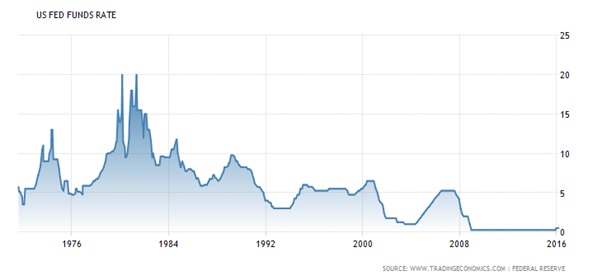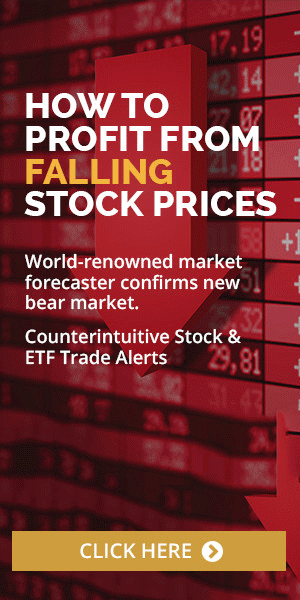The Only Safe Haven Left In The World Is Gold
 Globally, Central Banks are resorting to measures which have never before been witnessed in history. Since the beginning of time, ‘boom and bust cycles’ have been a natural economic cycle. Economies, globally auto-correct themselves by punishing the ‘excesses’ and ‘rewarding prudence.’
Globally, Central Banks are resorting to measures which have never before been witnessed in history. Since the beginning of time, ‘boom and bust cycles’ have been a natural economic cycle. Economies, globally auto-correct themselves by punishing the ‘excesses’ and ‘rewarding prudence.’
Nonetheless, since the last ‘financial crisis’, the Central Banks, around the world, have been attempting to avert this cycle by artificially supporting the economy and their markets, by using various ‘financial engineering’ tools. However, they have not been capable of solving the problem! They are merely postponing the inevitable!
When Bubbles Burst, Banks Make Mistakes
Following the ‘dotcom bubble burst’, the FED embarked upon an easy monetary policy, which encouraged subprime lending and thereby finally resulting in a ‘financial crisis’ Since 2009, the FED maintained a zero interest rate policy, until December of 2015, at which time they increased rates by 25 bps. Technically, interest rates are still close to zero percent, as indicated in the chart below.

Surprisingly, the policy makers of the Eurozone, Japan, the UK and China have also copied this ‘quick fix’ methodology by the FED, leading to the same disastrous results, globally.
All of these years of ‘easy monetary policy’ have led to inflated assets globally. Vikram Mansharamani, a lecturer at Yale University, told CNBC, "I think it all started with the China investment bubble that has burst and that brought commodities down with it, which started deflation and those ripples are landing on the shore of countries literally everywhere. I mean, we've got a bubble bursting, In Australian housing markets look like they are beginning to crack; South Africa — the whole economy; Canada — housing and the economy; We can keep going on and on."
Did the Central Banks only resolve these issues by reducing interest rates? No! They have also resorted to massive money printing, as well. Since the ‘financial crisis’, the total debt of the world, has increased dramatically, as indicated in the chart below.

Central Banks Go Negative Above
Considering the ‘easy monetary policy’ worldwide, and the amount of money printed, one would assume inflation to be skyrocketing, and growth to be expanding. However, the reality is far from this situation. Most nations are struggling to ward off deflation, and avoid further recession, which means that the Central Banks have not been capable of achieving their objectives.
This has led a few Central Banks to push interest rates into negative territory, for the first time ever. It all began with the ECB, and has spread to Sweden, Switzerland and Japan. As the negative interest rates have not achieved their objectives, the ECB and Bank of Japan are contemplating pushing interest rates even further and deeper into a more negative territory. The FED even considered following the same path. Chairwoman Yellen recently stated, “they are studying it closely, in order to use it, if needed in the future”.
There are a number of experts who believe that the current low inflation rates and low growth environment are due to the incorrect monetary policy of the Central Banks. The Bank of England's Governor, Mark Carney, recently said, “Negative interest rates will only help to perpetuate a world of lower rates and slower growth and are a signal that central bank monetary policy options are now severely limited”, as reported by The Week.
The world is frantically losing confidence that the Central Banks, led by the FED, will be able to react to any financial crisis, in the near future. This was evident in the recent ‘market crash’, despite announcements that were made of further easing by the ECB and negative interest rates, by the Bank of Japan.
When the Central Banks fail, investors move towards different asset classes which are perceived as ‘safe havens’. The U.S. Dollar, the Japanese Yen and the Swiss Franc have been considered ‘safe havens’, in the past. However, no longer are they deemed so! The famous investor, Jim Rogers, states that the U.S. Dollar is the most flawed currency, the Yen is a ticking time bomb considering the unmanageable debt of Japan, and the actions of the Swiss Central Banks led to massive bankruptcies in January of 2015.
Gold Is The Definition Of A Safe Haven
This brings us to the final ‘safe haven’, which has withstood the ‘test of time’, which is gold. It has maintained its’ value during the past 5000 years, and the current rise in gold during the ‘market collapse’ is proof that it is a ‘safe haven status’ which is still intact. Gold rose more than 16%, within two months, on the notion of a ‘financial crisis’. Imagine how high gold will rise when the ‘real crisis’ affects the world economies.
Gold is still more than 30% below its highs. As advised in my last article, traders and investors should buy 10-15% of their portfolio allocation in gold, when it drops to $1150-$1190/oz. levels which I expect will happen over the next 1-4 weeks.
How high can gold go? I believe it can elevate as high as $5000/oz., during a ‘full-blown crisis’. With limited downside risk and a huge profit potential, followers should buy gold.
In fact, in a recent conversation, I had with Kyle Winn the Founder and COO of Gold Gate Capital. A firm that specializes in precious metals, gold investing. He agrees with my forecast of what is to unfold and he has a free book called "The Looming Financial Crisis" that focuses specifically on how to properly invest in metals and how to do it properly within your gold IRA and 401k. He went on to mention that those between the ages of 65-85 can benefit the most.


















